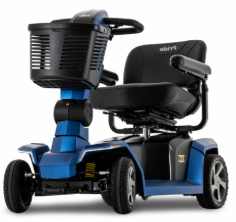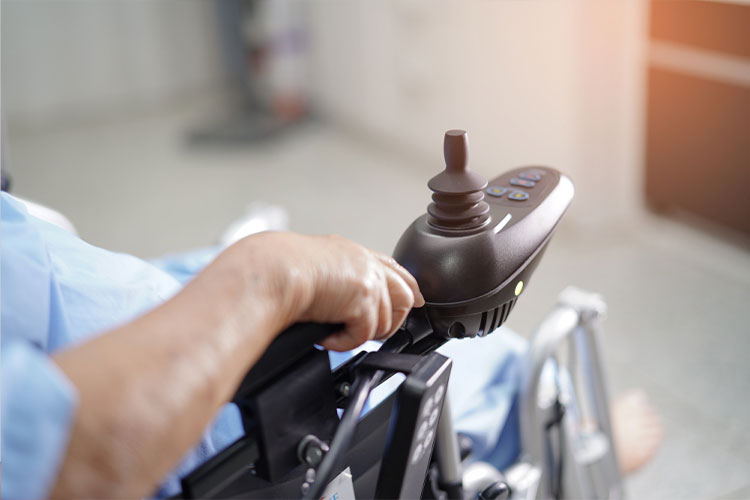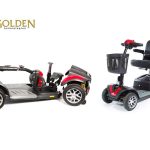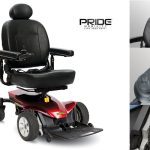For individuals with mobility challenges, a manual wheelchair can be a transformative tool, offering independence and improved quality of life. However, with various types available, each tailored to different needs, selecting the right manual wheelchair can be a daunting task. This blog will guide you through the process of choosing the perfect fit among four popular categories: lightweight, basic, heavy-duty, and recline-back wheelchairs.
1. Lightweight Wheelchairs: Enhanced Mobility for Active Users Lightweight wheelchairs are designed for individuals who value portability and independence. They are ideal for users who can propel themselves or require minimal assistance. Here are some key factors to consider when selecting a lightweight wheelchair:
- Frame Material: Aluminum frames are lightweight and durable, making them the most popular choice. However, carbon fiber frames offer even more weight reduction, albeit at a higher cost.
- Weight Capacity: Check the wheelchair’s weight capacity to ensure it can support your body weight and any additional accessories you might need.
- Foldability: Look for models that are easy to fold and unfold, as this feature enhances convenience during transportation and storage.
- Adjustability: Choose a wheelchair with adjustable features, such as seat height and backrest angle, to maximize comfort and support.
2. Basic Wheelchairs: Affordable and Practical Basic wheelchairs are budget-friendly options suitable for users with limited mobility who require a simple, no-frills solution. When selecting a basic wheelchair, consider the following aspects:
- Comfort: Prioritize padded seating and armrests for enhanced comfort during prolonged use.
- Durability: Opt for a sturdy steel frame to ensure the wheelchair can withstand regular wear and tear.
- Wheel Size: Larger rear wheels make it easier for caregivers to push the user, especially over rough terrain.
- Leg Rests: Elevating leg rests or swing-away footrests provide better leg support and are essential for those with leg injuries or swelling.
3. Heavy-Duty Wheelchairs: Robust and Sturdy Heavy-duty wheelchairs are designed for users with higher weight capacities or those who require extra durability for more extensive use. Here are some factors to consider when selecting a heavy-duty wheelchair:
- Weight Capacity: Ensure the wheelchair can safely support your weight and any additional accessories or equipment.
- Frame Strength: Look for reinforced frames made from strong materials like steel or titanium for added durability.
- Seat Width and Depth: Opt for a wheelchair with a seat that provides ample space and comfort for the user’s body size.
- Supportive Features: Consider padded seating, adjustable armrests, and leg rests for optimal comfort during extended use.
4. Recline-Back Wheelchairs: Enhanced Comfort and Pressure Relief Recline-back wheelchairs are ideal for users who spend prolonged periods in a wheelchair or those with pressure sores or other medical conditions. When selecting a recline-back wheelchair, focus on these factors:
- Recline Mechanism: Ensure the wheelchair has a smooth and easy-to-operate recline mechanism for adjusting the backrest angle.
- Pressure Redistribution: Look for wheelchair cushions and backrests with pressure-relieving features to reduce the risk of pressure sores.
- Weight Capacity: Check that the wheelchair can support both the user’s weight and the weight of the recline mechanism.
- Support and Stability: Opt for wheelchairs with sturdy construction and anti-tipping features to ensure stability and safety in the reclined position.
Selecting the proper manual wheelchair is a crucial decision that can significantly impact an individual’s mobility and comfort. By understanding the specific needs and preferences of the user, you can make an informed choice among lightweight, basic, heavy-duty, and recline-back wheelchairs. Remember to consider factors such as weight capacity, frame material, adjustability, and comfort features to ensure the chosen wheelchair perfectly suits the user’s lifestyle and medical requirements. Always consult with a healthcare professional or mobility expert for personalized recommendations to make the best decision for improved independence and mobility. To select and purchase the Proper Manual Wheelchair click the link manual wheelchairs.






















